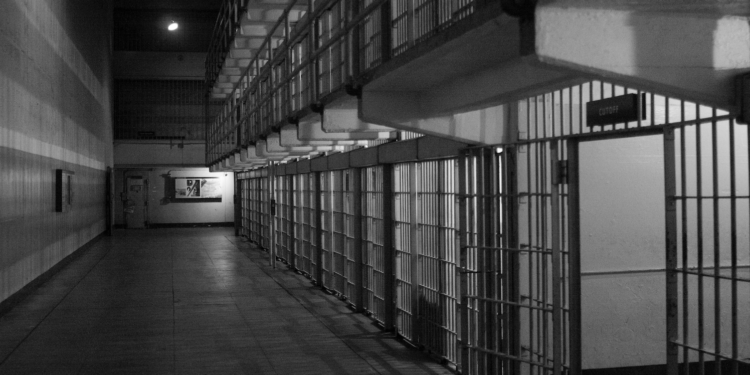Heat waves and high temperatures are becoming more common globally, and it’s predicted that new record temperatures may be reached in 2023 and 2024. There is no denying that climate change is causing an increase in the severity, duration, and frequency of heat.
As the temperature increases, there is a higher risk of overheating and heat-related deaths.
Overheating, also called hyperthermia, can appear in the form of heat strokes, heat cramps, heat exhaustion, heat rashes and sunburns. Common symptoms are dizziness, headaches, nausea, high body temperatures and loss of consciousness.
Moreover, intense heat can worsen pre-existing health problems such as heart disease, breathing issues, stroke, and diabetes-related illnesses.
Hyperthermia can be fatal in severe cases. In 2022, 15,000 people in Europe died with overheating being the main reason for death.
While most people can escape the heat, cool off in a shower whenever they want, go for a swim, feel the fresh breeze outside or turn on the air conditioner, these privileges are inaccessible to the millions of people who serve sentences in prisons or are held in immigration detention facilities.
The Deadly Impact of Heat in Prisons in the United States
As of 2023, over two million people were incarcerated in the United States (US). Further, the US ranks among the ten countries with the largest number of prisoners per 100,000 of the national population.
With 133,772 prisoners in 2021, Texas has the most people imprisoned in the US.
It is worth noting that the states with the highest incarceration rates are the same ones that often lack air conditioning in their prisons. Additionally, these states are also the ones that are most impacted by extreme heat.
On top of that, experts predict a significant rise in temperatures, particularly in the southern states, warning of an emerging “extreme heat belt.”
Our analysis uncovered an emerging “Extreme Heat Belt” stretching from the Northern Texas and Louisiana borders to Illinois, Indiana, and even into Wisconsin. Read more about our findings in this article by @washingtonpost https://t.co/6ORKdPQwkB
— First Street Foundation (@FirstStreetFdn) August 15, 2022
Prisons are home to some of the most vulnerable people in society. Many inmates are over 50, and many suffer from mental illnesses, diabetes, and asthma. Furthermore, many take psychiatric or hypertension medication.
All of the above make them especially vulnerable to extreme heat.
According to a 2022 study by Harvard and Brown University, 13% (271) of inmate deaths during warm months between 2001-2019 in Texas prisons without air conditioning may be linked to heat-related causes.
The same study showed that an extreme heat day in these prisons was associated with a 15.1% increased risk of death. Unfortunately, a significant number of prisons still do not have air conditioning installed. In fact, 70% of prisons in Texas are without air conditioning.
In light of the 95% of households in the South having air conditioning, it is even more shocking that this basic right is denied to prisoners.
It has been reported that temperatures in prisons have been above 100°F (37.7°C) for days. As temperatures rise, the number of heat-related deaths in prisons could increase further.
Related Articles: Surviving Extreme Heat in the Slums | Is Gun Violence a Result of Climate Change? | Toward a Systemic Adaptation to Heat | How You Can Take Action Against Mass Incarceration in America | Heat Levels Expected to Reach Record Highs in the Next 5 Years: Are We Prepared?
During heatwaves, some prisons may offer air-conditioned respite areas, cold showers, ice water, cooler meals and expanded access to electrolyte drinks; however, the demand for these measures is often so high that not everyone can access them.
Benny Hernandez, a criminal justice advocate and a graduate student at the University of Texas, who completed a 10-year sentence in a Texas prison, wrote: “They do absolutely nothing to reduce the temperature. It routinely feels as if one’s sitting in a convection oven being slowly cooked alive. There is no respite from the agony that the heat in Texas prisons inflicts.”
Further, it is not just the inmates enduring the extreme heat in prisons but also the prison officers and staff.
Amite Dominick, president and founder of Texas Prisons Community Advocates, an organisation that campaigns for prisoner welfare, said: “With climate change each summer is going to be worse than the last. If nothing is done about this, people will continue to die.”
Prisons are regulated on a state-by-state basis in the US. A bill was passed by the Texas House of Representatives in 2021, requiring prisons to maintain temperatures between 65°F and 86°F (18.3- 29.4°C).
However, lawmakers failed to come up with the necessary funds to cover the costs, resulting in the bill dying in committee. A similar bill was passed in April this year, but once again, legislators have been unable to secure the necessary funding.
It is important to note that these conditions in prisons are a matter of both human rights and constitutional rights.
In 2022, the Department of Justice (DOJ) deemed a Mississippi prison to have violated inmates’ constitutional rights by providing inadequate care – one of the issues discovered was the excessively high temperatures within the facility.
Heat Poses Growing Danger to Prisoners Around the World
Also, in other parts of the world, inmates are facing rising temperatures, often with no access to air conditioning.
Especially in the UK, advocates got vocal on the issue during the 2022 UK heatwave and 40,000 people signed a petition to take action to ensure that prisoners and migrants held in immigration detention facilities don’t overheat.
Just spoke to a client in HMP Long Lartin.
Today, and each day this weekend, they only get 1 hour 15 mins out of their cell in the WHOLE 24 hour day. In this 30°+ heat. He’s told they have no staff, in a high security prison.
How on earth can this continue to be acceptable?
— Yasmin (@legally_yasmin) July 15, 2022
Kevan Thakrar, a prisoner in the HM Prison Belmarsh stated: “I have spent weeks in bed wearing two full tracksuits to keep warm, and weeks naked feeling too weak to move from the heat.”
It is not only the rising temperatures which cause suffering in prisons and detention facilities. The longer winters are also increasingly affecting prisoners, with people dying from the cold temperatures.
The European Court of Human Rights (ECtHR) has stated that temperatures in prison cells must be kept “appropriate.” With rising temperatures due to climate change, this should ultimately include the installation of air conditioning.
As our climate continues to get warmer as a result of human activities, it is crucial that the most vulnerable parts of society are supported. This includes people serving time in prison or being held in immigration detention facilities.
As Julie Skarha, an environmental epidemiologist at Brown University’s School of Public Health and conductor of the Texas prison research, said: “In the context of climate change, AC is not a luxury. It’s a human right.”
Editor’s Note: The opinions expressed here by the authors are their own, not those of Impakter.com — In the Featured Photo: Alcatraz, San Francisco, USA. Featured Photo Credit: Emiliano Bar.










